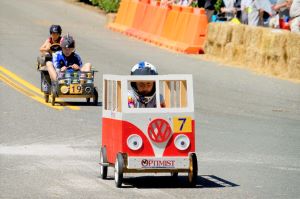From sponsoring water parks for children and their families, developing an outdoor fitness course, providing food for children of low income families, to running a bathtub race, cleaning up a street, opening First Nations learning centres, shipping medical equipment to communities in other countries or supplying clean water in Southeast Asia where there is need, the 50 Rotary clubs in Greater Vancouver up the coast to Prince Rupert generated more than 68,500 volunteer hours of service among their 1,500 members in the past year.
According to calculations in a special Value of Rotary Volunteering report by Johns Hopkins University’s Center for Civil Society Studies, the monetary value of that time devoted to local, regional and international projects is $1,514,250 in 2017-18 (based on a conservative rate of US$18 per hour). The total time for the 50 clubs over the past five years has been 160,200 hours for an estimated value of $3,604,500.
An annual soapbox derby is just one of many community service projects sponsored by the Rotary Club of Tsawwassen
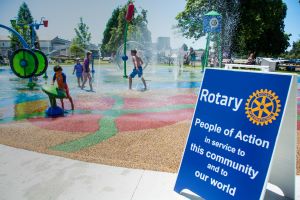 | 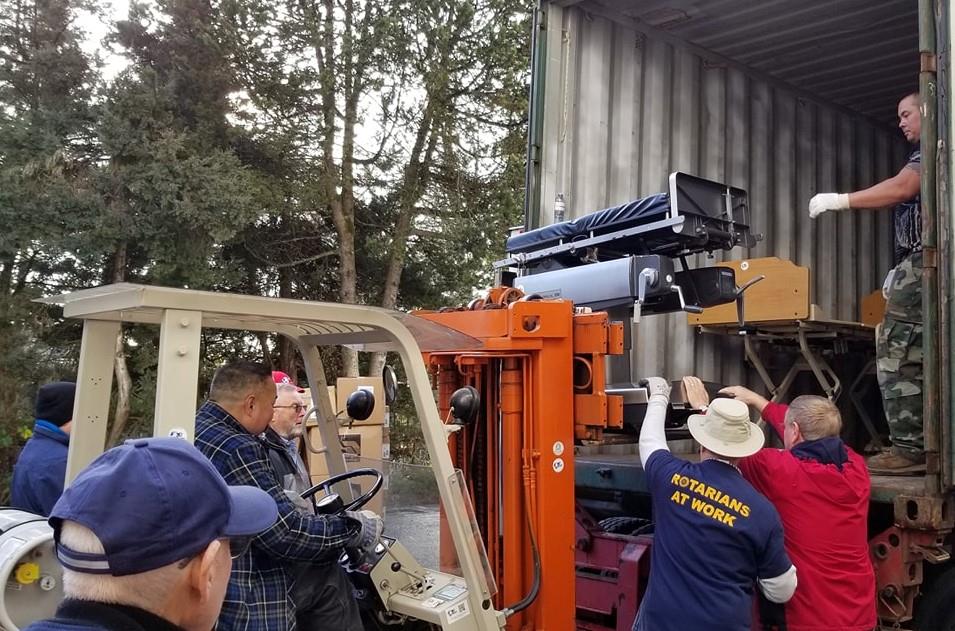 |
| Ladner Rotary Splash Park opened in July 2018 | Rotarians load a container with needed medical and dental equipment for a community in Cuba |
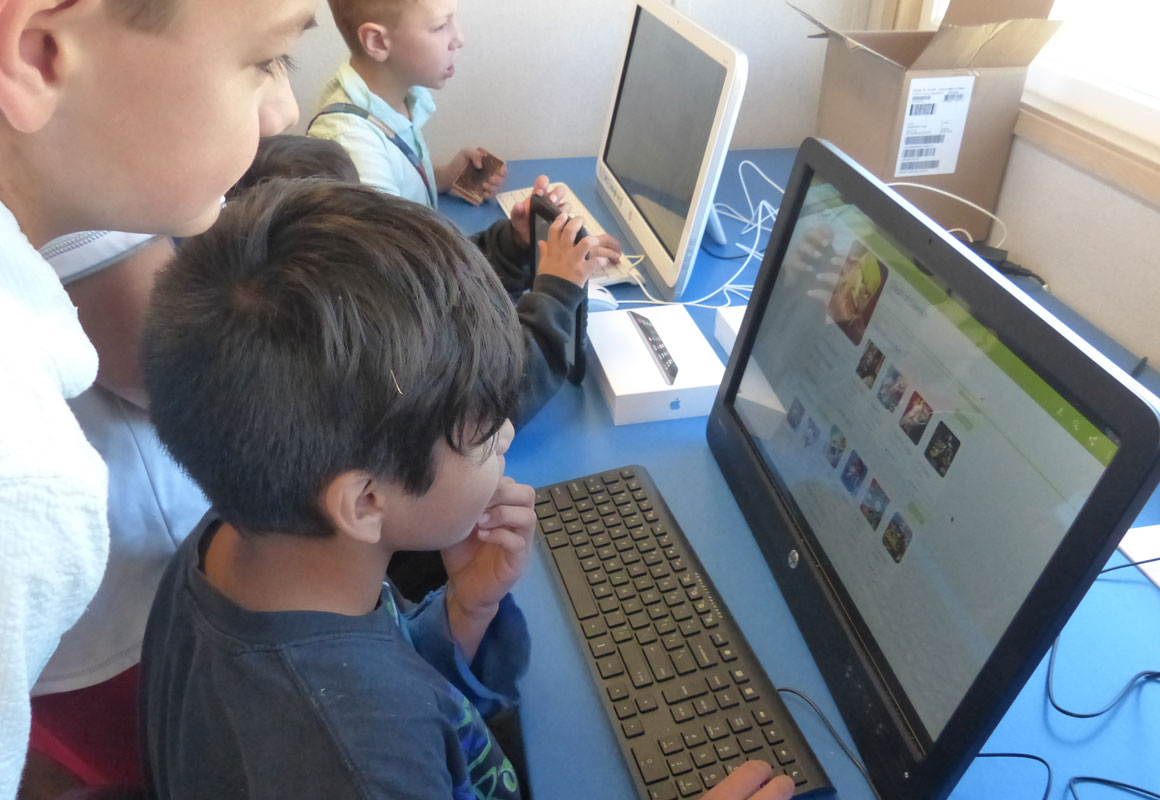 | 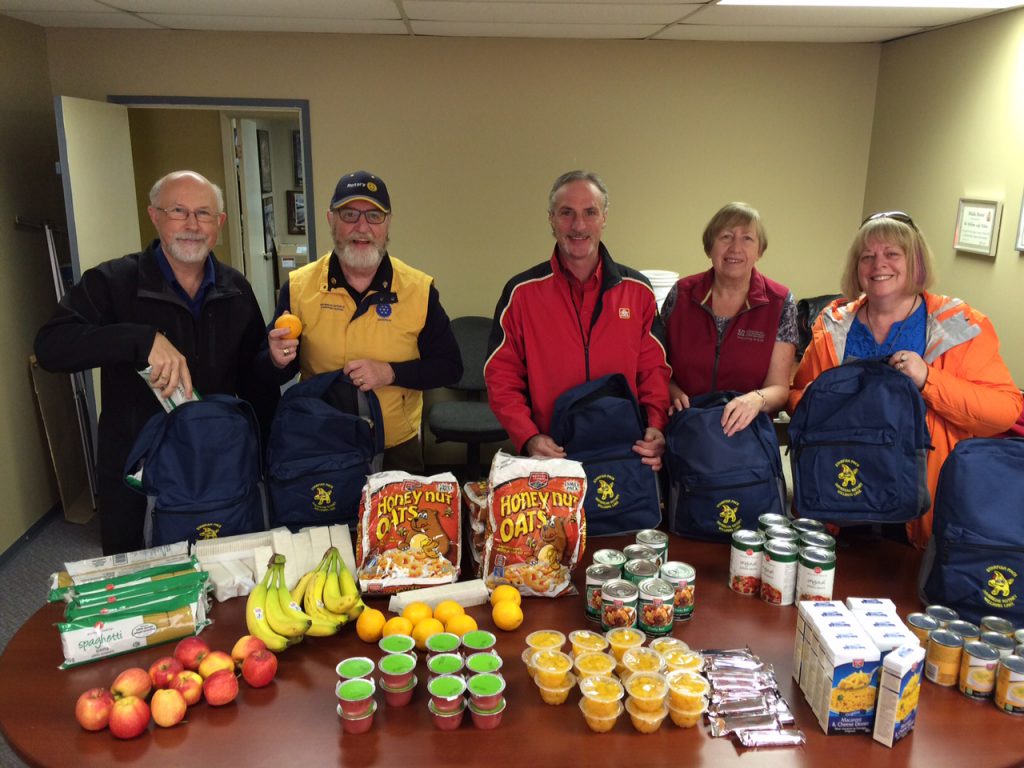 |
| Rotary has been working with First Nations in BC to open local learning centres in the Write to Read program | Starfish Packs with food for school children from low income families are provided by Rotary in Williams Lake |
According to the report, Rotary members volunteered a total of 5.8 million hours within a four-week survey period. Extrapolating those results over an entire year, the report gave a conservative estimate of nearly 47 million hours of volunteer effort generated by Rotary members in a typical year.
The report then analyzed the economic impact of all those hours and estimated the value conservatively at $850 million a year, if communities had to pay for the services that Rotary volunteers provide.
Rotary, with the help of Johns Hopkins University, is the first global service organization to conduct an empirical analysis of its volunteers’ impact using an internationally sanctioned definition of volunteer work. The authors of the report noted in their conclusion that at each stop, the analysis had chosen the most conservative estimates.
“This makes the results reported here all the more remarkable,” the authors noted. “Translated into economic terms, Rotary is annually generating a scale of social and economic problem-solving effort that is worth nearly nine times more than it costs the organization to produce.”
Rotary General Secretary John Hewko said the figure doesn't even include the in-kind contributions and the money that Rotary clubs and the Rotary Foundation raise every year. In addition, the figure doesn’t include the volunteer work of the many relatives and friends of Rotary that members often involve in a project, or that of members of Rotaract, Interact, or the Community Corps, that would easily double the estimate of Rotary’s economic impact.
